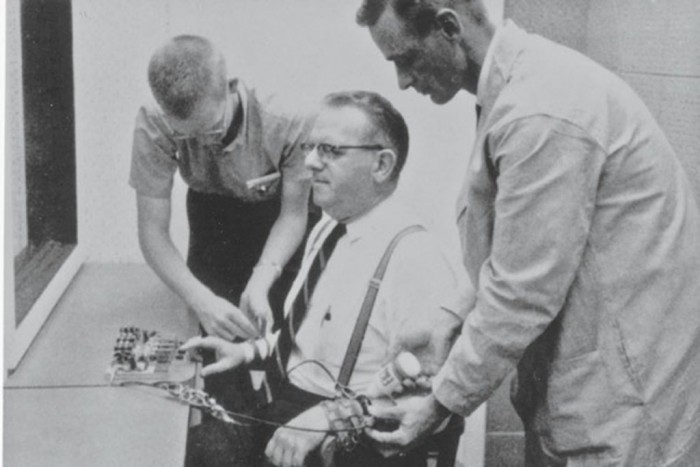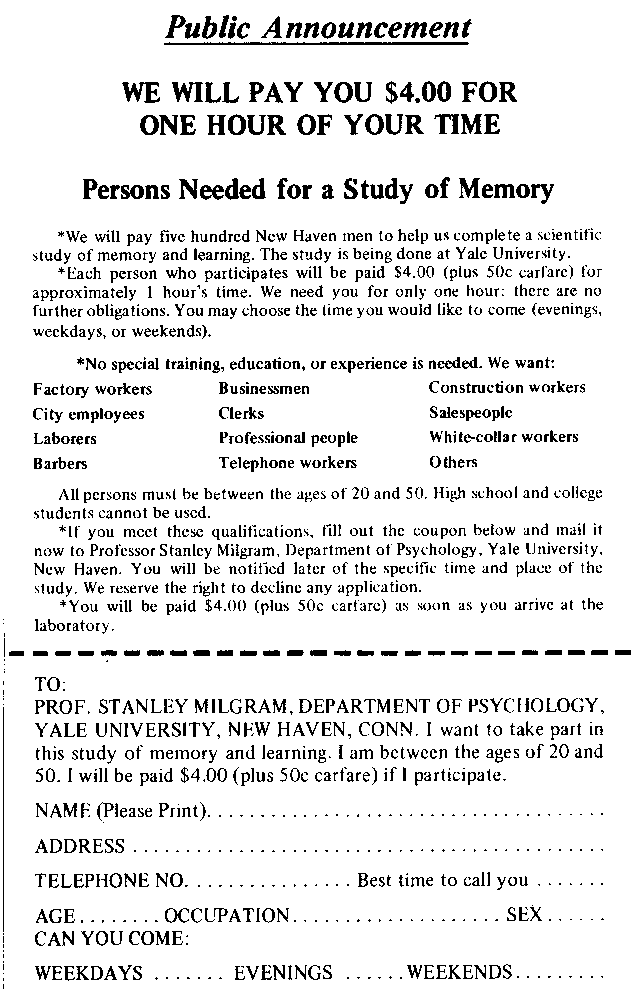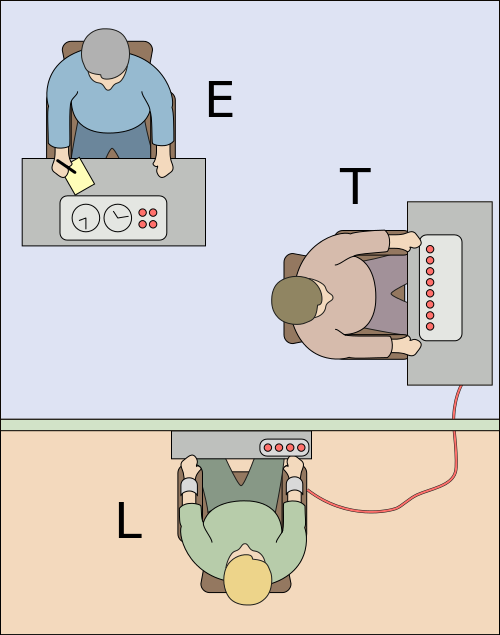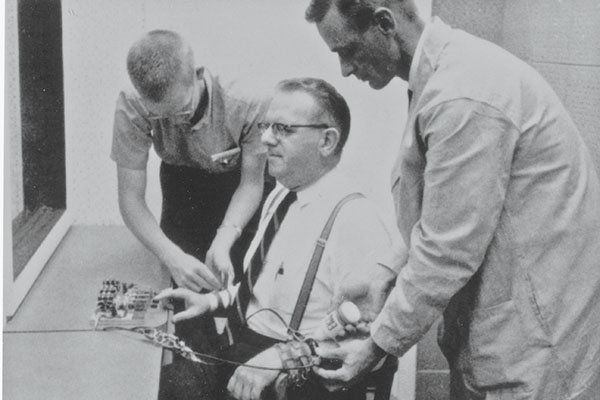Milgram Shock Experiment: The Most Infamous Psychological Experiment in History
Conducted by famous psychologist Stanley Milgram in the 1960s, the Milgram Shock experiment was the most infamous & controversial psychological experiment in history.

Nearly 50 years back from now, a famous psychologist Stanley Milgram conducted history's most controversial and best-known psychological experiment on obedience during his professorship at Yale University in the 1960s. It presented a stark picture of how people experience a conflict of personal conscience and inflict serious injury and distress to others when commanded by an authority figure.
For the first time in 1963, Milgram gave a detailed account of his experimental research in an article published in the Journal of Abnormal and Social Psychology. Later on, in 1974, he described his findings in greater depth in a book named Obedience to Authority: An Experimental View.
What Was the Milgram Experiment All About?

A series of social psychology experiments were carried out by Stanley that was called the ‘Milgram experiment on obedience to authority figures’. The research involved participants from different professions and educational qualifications. The study measured how far they would go if an authority figure ordered them to cause harm to others. And shockingly, it was found that the majority of people were ready to obey, even though unwillingly, and cause grave injury and harm.
Three people playing three different roles during the experiment were the “experimenter” (the authoritative figure), the “teacher” (the one supposed to obey the orders of the Experimenter), and the “learner” (the recipient of stimulus from the Teacher). A Confederate mentioned to the participant that he had a heart condition.
At some point in time before the actual experiment, the “teacher” receives a sample electric shock that gives him an experience of what the shock would feel like during the experiment. Then the “teacher” would ask the “learner” word pair questions and read out the first word giving four options. Now the “learner” has to respond by pressing a button. If the answer is correct, a further question is asked. And for every wrong answer, the “teacher” would administer shock with an increase of 15 volts.
The subjects thought that the “learner” was actually receiving shocks but there weren’t any shocks in reality. Once the accomplice was separated from the subject, the accomplice would play pre-recorded sounds of various shock levels by integrating a tape recorder and electroshock generator. After a certain number of voltage-level increases, the actor began banging the wall that isolated him from the subject. Once several bangings on the wall were made and heart condition complaints were reported, all responses by the “learner” would stop.

After reaching this point, several people would express their desire to stop the experiment and check on the learner. Some of the test subjects would get the experiment paused and question its purpose. A majority of them would continue after they were told that they won’t be held responsible. After hearing the screams of pain from the “learner”, some subjects began laughing out of nervousness and showed signs of extreme stress.
At any time during the experiment, when the subject wished to stop the experiment, these four successive verbal prods were given to him by the “experimenter” (in the same order):
- Please continue.
- The experiment requires that you continue.
- It is absolutely essential that you continue.
- You have no other choice, you must go on.
And the experiment was halted if the subject still expressed the desire to halt after all 4 successive verbal prods. In another case, the experiment was stopped after supplying a maximum 450-volt shock thrice in a row.
The “experimenter” even gave special prods if the “teacher” made particular comments. When the “teacher” asked whether the “learner” might have a permanent physical injury, the experimenter said,
"Although the shocks may be painful, there is no permanent tissue damage, so please go on."
And when the teacher said that the learner irrefutably wants to halt the experiment, the experimenter said,
"Whether the learner likes it or not, you must go on until he has learned all the word pairs correctly, so please go on."
What Were the Results of This Controversially Infamous Experiment?

In the first set of experiments, 65% (26 of 40) subjects administered the concluding huge shock of 450 volts. Several were uncomfortable performing it, and each subject paused the experiment at some point and some even said that would pay back the money they were given for participating in the experiment.
Right through the experiment, the subjects demonstrated different degrees of tension and stress. They experienced trembling, groaning, sweating, stuttering, biting of lips, and digging of fingernails. Some of them even had nervous laughing fits or convulsions.
Popular Posts
What Is Trypophobia – A Disgust More Than Fear
"I can't really face small, irregularly or asymmetrically placed holes, they make me like, throw up in my mouth, cry a little bi...
Chandan Roy
16 Interesting Facts About Ambidextrous People
A lefty or left-handed uses his left hand more naturally and dominantly than the right hand. And the righty or right-handed is o...
Ethan Stephans
20 Interesting Facts About Meteoroid, Meteor and Meteorite
Watching celestial objects is a true delight. It is still fun to catch a sight of shooting stars when we grow up. A second of th...
Swati Bhandari








